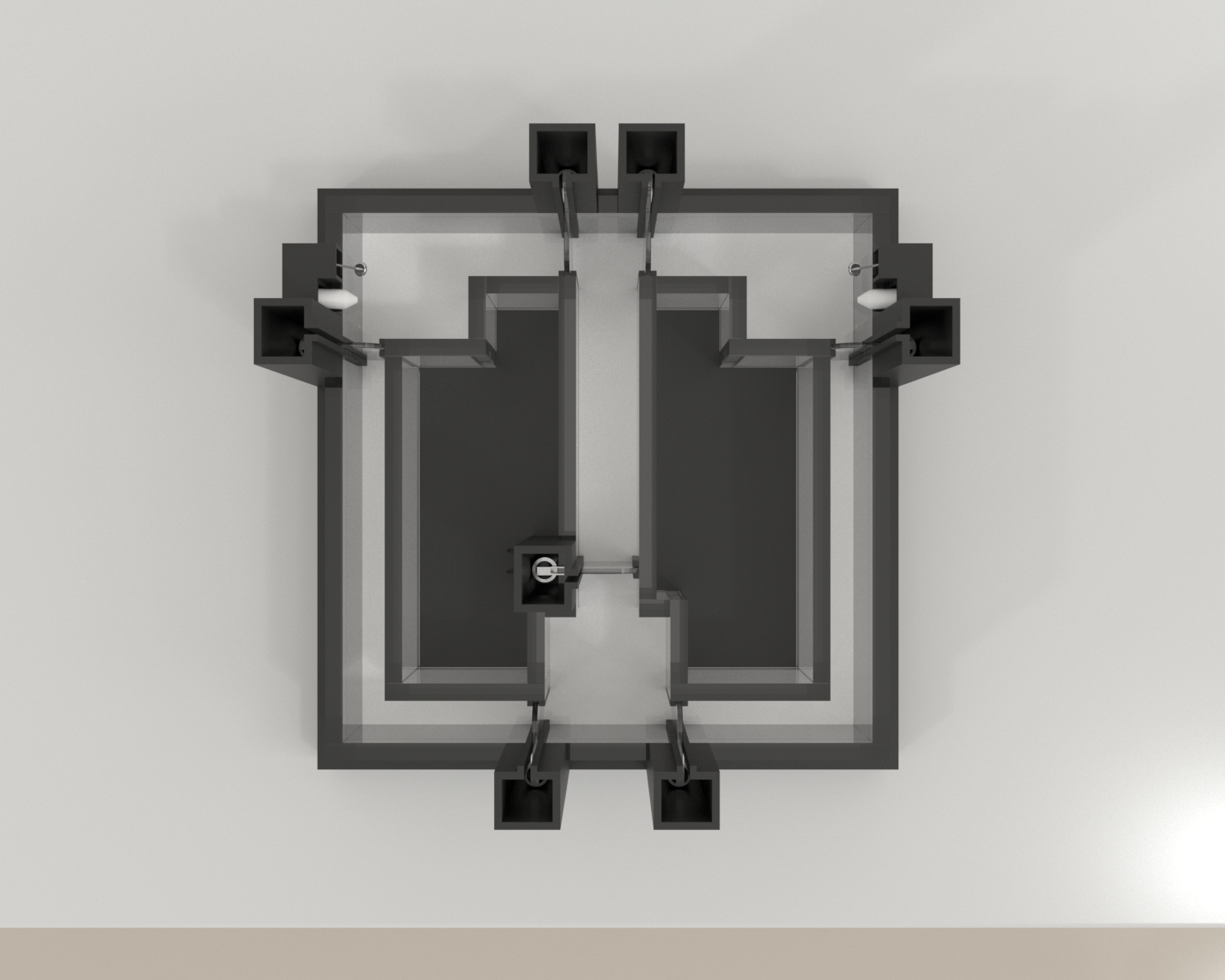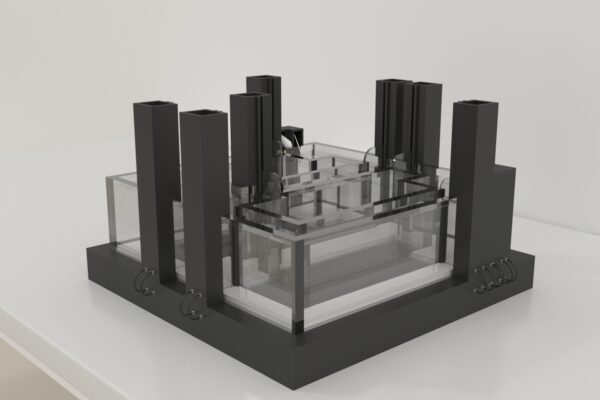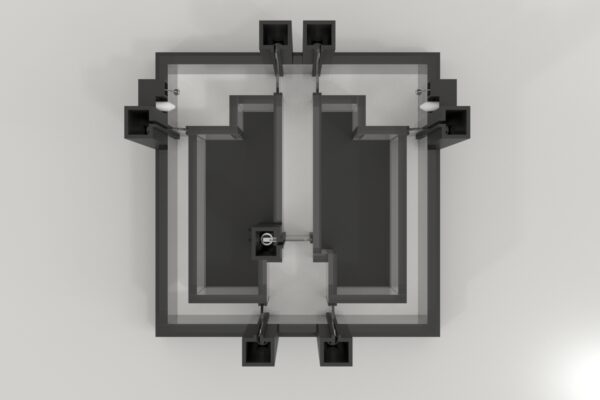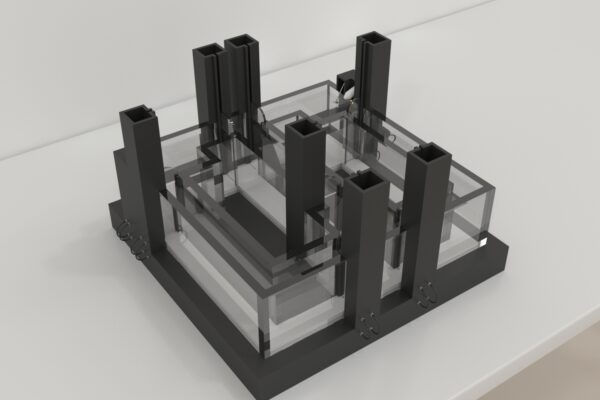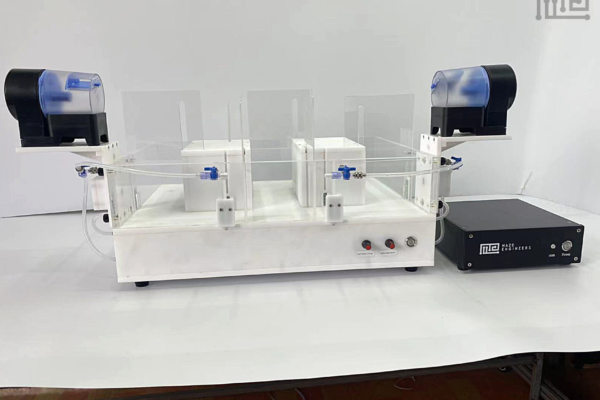The Zebrafish Automated T-maze is used to study spatial learning and memory along with conditioned behaviors in zebrafish. It consists of a chamber with test areas and returning pathways. Doors are placed within the test areas, which form a T-shape maze. It includes seven auto doors, two reward dispensers, two auto water stirrers, a control box, software, and other accessories.
The automated T-maze also comes with software to configure and run protocols. The maze doors are kept open or closed according to the experimental protocol to allow free choice of forced-choice behaviors.
MazeEngineers offers the Automated Zebrafish T Maze.

